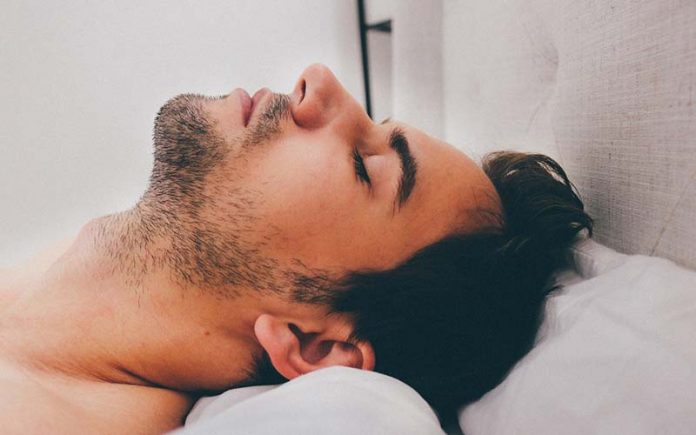Using a synthetic cannabis-like drug in form of a pill proved safe and effective in the treatment of obstructive sleep apnea in the first significant multi-site research to discover a drug for apnea, which was financed by the National Institutes of Health. This research was carried out at Northwestern Medicine as well as the University of Illinois at Chicago (UIC).
At the present time, there is no drug treatment available for sleep apnea. Sleep apnea is a widespread sleeping disorder which affects over 30 million people in the United States. Sleep apnea causes multiple breaks in breathing, these breaks range from just seconds to several minutes in severe cases, and may be experienced for 30 times or even more every hour. Without proper medical care, apnea makes its patients highly probable to a wide range of ailments, including; heart diseases, diabetes, sleepiness, cognitive impairment and car accidents.
People that took part in the trial reportedly had lesser apnea and reduced rate of subjective sleepiness.
Sleep apnea is widely treated by CPAP (Continuous Positive Airway Pressure) device which functions as an air splint, and supplies air in order to avoid the airway from collapsing, and also to avert breathing pauses. But it is difficult for many patients to keep using it, several patients stop after a while.
“There is a tremendous need for effective, new treatments in obstructive sleep apnea,” said co-lead study author David W. Carley, the Katherine M. Minnich Endowed Professor Emeritus of Biobehavioral Health Sciences, Medicine and Bioengineering at UIC.
Research has been conducted to explore the effects of dronabinol, which is a synthetic form of the molecule Delta-9 THC (tetrahydrocannabinol), contained in cannabis. This research was conducted on sleep apnea in a Phase 2 trial. This trial was the most substantial, and also the longest randomized controlled trial that has been employed in testing a drug treatment for sleep apnea.
Dronabinol has been endorsed by the Food and Drug Administration for the treatment of nausea and vomiting in patients undergoing chemotherapy for more than 25 years.
Drug targets the brain in new approach
In an attempt to test a new means of treatment, drug treatment was adopted. This new approach targets to correct this disorder from the brain rather than the physical issue of collapsing airways. This reinforces the belief that sleep apnea surpasses the bounds of just a mere physical issue, and may be as a result of several other underlying factors, amongst which is the lack of proper regulation of the upper airway muscles by the brain, said co-lead author Dr. Phyllis Zee.
Zee, who is the Benjamin and Virginia T. Boshes Professor of Neurology at Northwestern University Feinberg School of Medicine and director of the Northwestern Medicine Sleep Disorders Center.
Furthermore, he said that CPAP is aimed at improving the physical problem, not the cause of the disorder. The drug is targeted at the brain and the nerves that controls the upper body airway muscles. It modifies the information sent from brain to the muscles by altering the neurotransmitters. A deeper knowledge of this will aid in the development of a more functional and personalized treatment for sleep apnea.
Regardless of how effective CPAP is, several patients have disagreed to use it, Carley said. More so, patients that accepted it, use it for a few hours a night, most times for four hours on average.
For this reason, they are unable to get full treatment for sleep apnea. Whereas if a pill is used in the treatment of sleep apnea, it lasts for the full night.
How the study worked
The study featured 73 adult patients, each possessing moderate or severe cases of sleep apnea, were separated into three categories. The first category received high dosages of the drug, the second received a low dosage, and the third category, a placebo. Every participant had to take the drug one time every day before sleeping for six weeks.
Six weeks into treatment, the category that received the highest dose of dronabinol (10 milligrams) experienced a lesser rate of apneas or hypopneas (very shallow breathing) while sleeping, and also a reduced subjective sleepiness and recorded an overall better improvements as compared to the third category of participants that took a placebo. Their disorder became about 33% less severe compared to total compliance with the mechanical treatment, even if total compliance not common.
Real marijuana not the same as apnea drug
Can smoking ingesting of marijuana provide similar results for sleep apnea?
No, Zee retorted. She added that several varieties of cannabis have their different ingredients. Also, she mentioned that some types of cannabis contains functional ingredients that do not particularly work against sleep apnea.
“Cannabis contains dozens of active ingredients, but we tested just purified delta-9 THC,” added Carley.
Clinical trials have to be conducted in a larger scale, in order to explore the most effective approach to cannabinoid therapy in obstructive sleep apnea, the authors said.
UIC has licensed intellectual property which is connected to the experimental drug treatment which was employed in the research to the pharmaceutical company RespireRx.
Carley asserted that for over 35 years, several researchers have made attempts to discover drugs that will help in the treatment of sleep apnea, but have failed, and for over 15 years ago, Carley presented dronabinol as a useful lead to the treatment of sleep apnea. Alongside his colleagues, the concept was tested in an animal model of apnea, after which they published the outcome of their research in a journal SLEEP in 2002. Following the publication, was the launching of a pilot study in humans in 2007. The multi-center clinical trial which is led by Carly and Zee is as a result of those supporting the outcomes of the small-scale pilot study.
“By providing a path toward the first viable obstructive sleep apnea drug, our studies could have a major impact on clinical practice,” he said.
Coauthors on the study include Bharati Prasad, Boris Vern, Hui Xie, and Chengbo Yuan, all of UIC; and Kathryn Jean Reid, Dr. Roneil Malkani, Dr. Hrayr Attarian and Dr. Sabra Abbott, all of Northwestern.
The research was supported by grant from the UM1-HL112856 of the National Institutes of Health.






